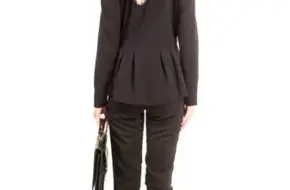Here’s the travel guide content for Deep China Travel:
Getting to the 798 Art District in Beijing is surprisingly straightforward and marks the start of a fascinating journey into China’s vibrant contemporary art scene. Your best bets are the Beijing subway or a taxi. Hop on Line 14 and head to Jiangtai Station (exit A); from there, it’s a well-signposted 10-15 minute walk through the district’s unique industrial architecture. Taxis are also plentiful – simply show the driver “798” or “Qijiuba” (七九八); expect a 30-45 minute ride depending on traffic from central spots like the Forbidden City. Once you arrive, the district is vast but easily navigated on foot. Prepare for an immersive experience where repurposed factory spaces house cutting-edge galleries, studios, and cool cafes – exploring independently is highly encouraged, though guided tours offer deeper context. Plan for at least half a day.
The 798 Art District, or Dashanzi Art District, is more than just a cluster of galleries; it’s a sensory feast and a cornerstone of Beijing’s cultural identity. Housed within decommissioned Bauhaus-style factories from the 1950s, the soaring ceilings, exposed pipes, and giant slogans offer an incredible industrial-chic backdrop for the art. Wander freely down wide avenues and hidden alleys, encountering everything from massive sculptures nestled between buildings to striking murals on brick walls and ever-changing, often provocative, installations spilling out of galleries. It’s a dynamic, constantly evolving space where the energy of creation is palpable. You’ll rub shoulders with artists, collectors, tourists, and locals, all drawn by the district’s unique blend of history, architecture, and the pulse of modern Chinese creativity. It’s an absolute must-visit for anyone seeking the cutting edge of art in Beijing.
How Can You Navigate Beijing’s 798 Art District Galleries?
Exploring the hundreds of galleries and art spaces within 798 Art District can feel overwhelming. Here’s a strategy:
- Focus Your Interest: Are you into paintings, sculpture, photography, new media, or design? Pick a couple of galleries known for that niche (e.g., UCCA for major exhibitions, Pace or Galleria Continua for renowned artists).
- Embrace Serendipity: Don’t over-plan! Much of the joy comes from stumbling upon hidden gems in the smaller, unassuming spaces tucked away in the labyrinthine complex. Pop into anything that catches your eye.
- Check Exhibitions Online: Before you go, quickly browse websites or apps like TheBeijinger or Time Out Beijing for current major exhibitions – but leave room for discovery.
- Pace Yourself: It’s huge. Prioritize a few must-sees, then wander freely. Don’t rush; soak in the atmosphere and the architecture as much as the art itself.
Where Can You Refuel in Beijing’s 798 Amidst the Art?
The 798 Art District boasts an eclectic mix of dining and drinking options that complement its artistic vibe:
- Cool Cafes: Find stylish cafes, often with great coffee and art books, nestled within galleries or overlooking courtyards (e.g., At Cafe near UCCA, C5 Cafe). Perfect for people-watching and taking a break.
- International Eats: From Italian trattorias and French bistros to Japanese ramen and modern Chinese fusion, there’s a global culinary offering. Many restaurants feature unique, design-focused interiors – eating becomes part of the artistic experience.
- Quirky Spots: Seek out unique spaces like cafes housed in old factory control rooms or hidden garden patios. The atmosphere is as important as the menu here.
- Quick Bites: Need something fast? Look out for small bakeries, juice bars, and casual spots offering sandwiches or light meals ideal for refueling without a long sit-down meal.
Why Consider a Guided Tour for Beijing’s 798 Art District?
While exploring solo is fantastic, joining a guided tour, like those offered by Deep China Travel, offers distinct advantages:
- Context is Key: Understanding the history of the factory complex, the rise of the art district against significant odds, and the nuances of contemporary Chinese art adds immense depth. A knowledgeable guide unlocks this.
- Artist Insight: Tours often provide access to information about specific artists and movements represented, explaining themes and techniques you might miss on your own.
- Efficiency & Access: Navigate the vast district efficiently, hitting key galleries and hidden spots you might overlook. Some tours might offer brief access to artist studios (when possible).
- Q&A Opportunity: Get your burning questions about the art, the scene, and Beijing’s culture answered directly by an expert. It transforms viewing into understanding.
How Should You Plan Your Beijing 798 Visit for the Best Experience?
Maximize your time at the 798 Art District with these practical tips:
| Planning Aspect | Recommendation |
|---|---|
| Best Time to Visit | Weekdays (Tue-Fri): Far fewer crowds, quieter atmosphere. |
| Weekends (Sat-Sun): Much busier, livelier vibe, sometimes special events/markets. | |
| Mornings (10am-12pm): Beat the main afternoon crowds, galleries are fresh. | |
| Budgeting Time | Minimum: Allow 3-4 hours to see highlights and get a feel. |
| Serious Exploration/Photography: Plan 5-6 hours or even a full day. | |
| Getting Around | Walking: Essential and easy within the pedestrian-friendly complex. |
| Bicycle Rentals: Occasionally available, fun for covering more ground quickly. |
What Unique Souvenirs Can You Find in Beijing’s 798 Art District?
Skip the mass-produced trinkets – 798 Art District is a treasure trove for authentic, art-inspired souvenirs:
- Gallery Shops: Many major galleries (UCCA, Pace) have excellent shops selling high-quality art books (often bilingual), exhibition catalogs, prints, and designer items.
- Designer Boutiques: Discover independent boutiques showcasing contemporary jewelry, ceramics, fashion, homewares, and accessories by Chinese designers – truly unique finds.
- Artist Studios & Markets: Occasionally, artists sell smaller works or prints directly from their studios. Weekend markets (check listings) can offer handcrafted items and prints by emerging talent.
- Posters & Smaller Artworks: Smaller galleries and some shops offer affordable posters, postcards, and sometimes even smaller original works perfect for taking home a tangible piece of Beijing’s contemporary scene. It supports the artists directly too!

